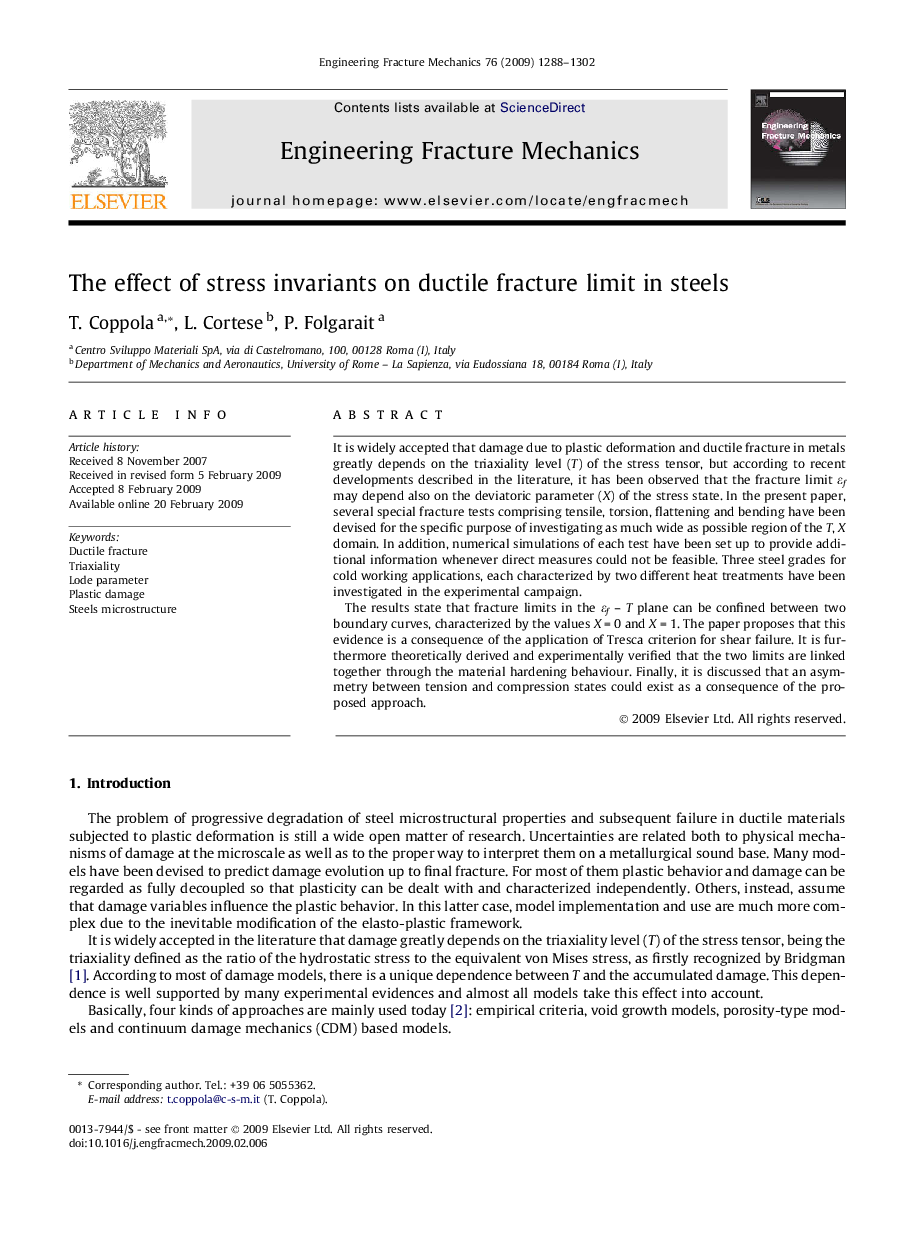| Article ID | Journal | Published Year | Pages | File Type |
|---|---|---|---|---|
| 771162 | Engineering Fracture Mechanics | 2009 | 15 Pages |
It is widely accepted that damage due to plastic deformation and ductile fracture in metals greatly depends on the triaxiality level (T) of the stress tensor, but according to recent developments described in the literature, it has been observed that the fracture limit εf may depend also on the deviatoric parameter (X) of the stress state. In the present paper, several special fracture tests comprising tensile, torsion, flattening and bending have been devised for the specific purpose of investigating as much wide as possible region of the T, X domain. In addition, numerical simulations of each test have been set up to provide additional information whenever direct measures could not be feasible. Three steel grades for cold working applications, each characterized by two different heat treatments have been investigated in the experimental campaign.The results state that fracture limits in the εf - T plane can be confined between two boundary curves, characterized by the values X = 0 and X = 1. The paper proposes that this evidence is a consequence of the application of Tresca criterion for shear failure. It is furthermore theoretically derived and experimentally verified that the two limits are linked together through the material hardening behaviour. Finally, it is discussed that an asymmetry between tension and compression states could exist as a consequence of the proposed approach.
